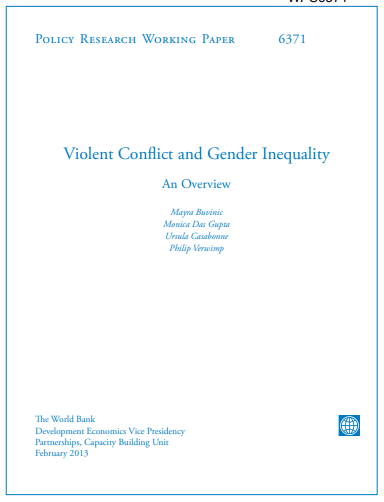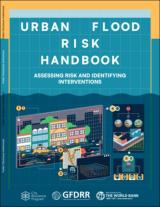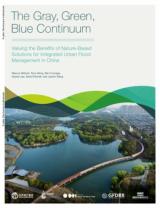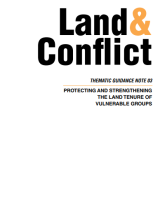
-
Country/City
World
-
Topics
Disaster Risk Management, Health, Economic and Social Development, Gender
-
Published On
February 14, 2013
-
Author(s)
Mayra Buvinic , Monica Das Gupta , Ursula Casabonne , Philip Verwimp
Violent conflict, a pervasive feature of the recent global landscape, has lasting impacts on human capital, and these impacts are seldom gender neutral. Death and destruction alter the structure and dynamics of households, including their demographic profiles and traditional gender roles. To date, attention to the gender impacts of conflict has focused almost exclusively on sexual and gender-based violence. The authors show that a far wider set of gender issues must be considered to better document the human consequences of war and to design effective postconflict policies. The emerging empirical evidence is organized using a framework that identifies both the differential impacts of violent conflict on males and females (first-round impacts) and the role of gender inequality in framing adaptive responses to conflict (second-round impacts). War’s mortality burden is disproportionately borne by males, whereas women and children constitute a majority of refugees and the displaced. Indirect war impacts on health are more equally distributed between the genders. Conflicts create households headed by widows who can be especially vulnerable to intergenerational poverty. Second-round impacts can provide opportunities for women in work and politics triggered by the absence of men. Households adapt to conflict with changes in marriage and fertility, migration, investments in children’s health and schooling, and the distribution of labor between the genders. The impacts of conflict are heterogeneous and can either increase or decrease preexisting gender inequalities. Describing these gender differential effects is a first step toward developing evidence-based conflict prevention and postconflict policy.



